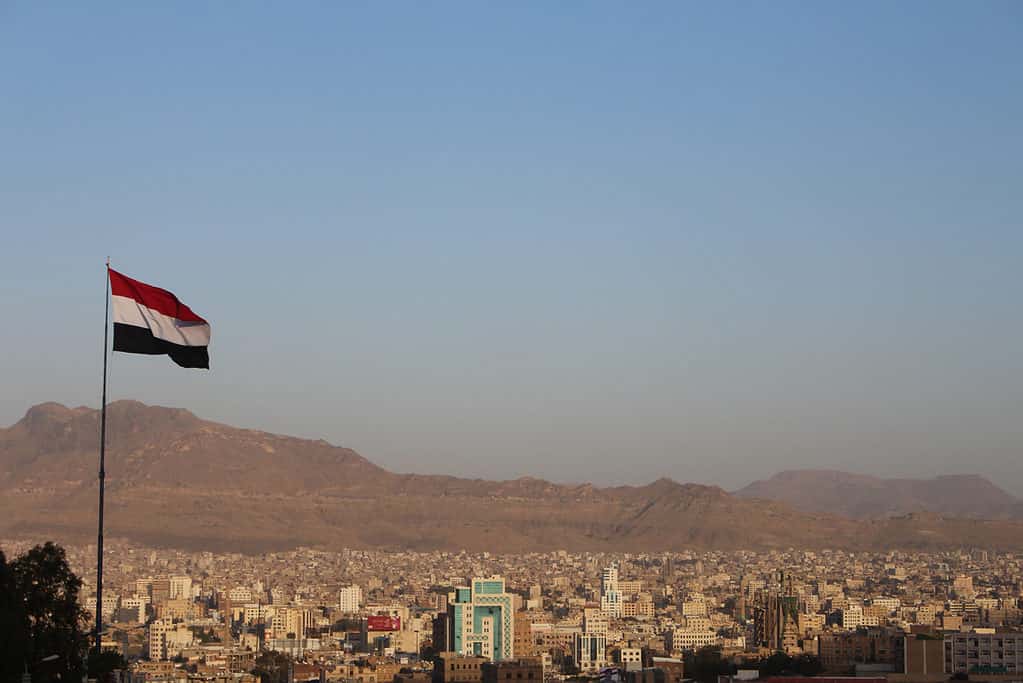Yemen is a nation in the Arabian Peninsula’s southwestern region with hills and deserts. Most of the population is Muslim and speaks several dialects of Arabic.
Yemen’s history, culture, economy, and people have all been impacted by the country’s important position at the southern entrance to the Red Sea. For one, it serves as a crossroads for ancient and contemporary commerce and communication routes. In the ancient world, the nations that held what is now Yemen controlled the supply of essential commodities. These commodities include frankincense, myrrh, and other precious items, such as Asian spices and aromatics.
Due to its fertility and economic success, Yemen was once the seat of some ancient kingdoms. For the same reason, it was known to the ancient Romans as Arabia Felix (Latin: Fortunate Arabia). This was used to differentiate it from the vast forbidding regions of Arabia Deserta (Desert Arabia). Later, Yemen became the first area where coffee (Arabic: qahwah) was commercially farmed. For a long time, it remained the only source of that valuable bean until the introduction of coffee plants in other parts of the globe.
There’s more to Yemen than meets the eye, and most of the country’s legacies can be traced back to history. For instance, the country’s flag’s story began when the country was subject to colonial governance. Find out more about this below!
Founding of Yemen
The Yemen Arab Republic (North Yemen) merged with the People’s Democratic Republic of Yemen (South Yemen) to become the current Republic of Yemen in May 1990. According to the unification agreement, Sanaa, once the capital of North Yemen, serves as the country’s political capital. On the other hand, Aden, formerly the capital of South Yemen, serves as the country’s economic center.
The histories of Yemen’s two components are starkly different. Although North Yemen never suffered colonial governance at the hands of European power, South Yemen was a member of the British Empire from 1839 to 1967. The modern boundaries are primarily the result of the foreign policy ambitions and activities of the United Kingdom, the Ottoman Empire, and Saudi Arabia. Yemen has been plagued by chronic corruption and economic suffering since its unification. Religious, ethnic, and geographic divisions also play a vital role in Yemeni politics, occasionally leading to bloodshed.
Yemen was one of the world’s most isolated places, even throughout the era of colonial authority. The same can be said today; few foreigners explore Yemen’s rocky interior, much of which has remained largely unaffected by central government control. Still, Yemen is a nation of tremendous physical beauty, as it is attractive and scenic, with liveliness and verdancy in the mountains, unlike anywhere else on the Arabian Peninsula.
Characteristics of Yemen

Yemen has a land mass of 187,000 square miles.
©iStock.com/Belal Al-shaqaqi
From the hilly southwest, encompassing Najran and Asir, to Hadhramaut and Oman on the east, medieval Arab geographers considered Yemen to span the whole southern Arabian peninsula. In 1990, the Yemen Arab Republic (YAR), with its capital in Sanaa, and the People’s Democratic Republic of Yemen (PDRY), with its capital in Aden, were combined to establish the Republic of Yemen (RY). Since certain boundaries are undefined, the country has a land mass of 187,000 square miles (North: 75,000 square miles; South: 112,000 square miles).
Six cultural-economic zones exist in Yemen. The Tihama, a coastal plain and hilly terrain near the Red Sea, is 15 to 25 miles wide. Fishing, commerce, and trade at the ports of al-Mukha (Mocha) and al-Hudayda take place in this area, as well as agriculture and livestock rearing. Zabid, Bayt al-Faqih, and others make crafts, while the west highlands have seasonal showers. Terrace agriculture is practiced to grow millet, wheat, barley, grapes, coffee, tobacco, vegetables, fruits, qat, goats, sheep, cows, and donkeys.
Central highlands have broad plateaus and basins, which means most crops are irrigated by wells and rains. Sanaa and Sa’da are cities here, and the Eastern highlands connect with the Rub al-Khal desert. Semi-nomadic people grow date palms in tiny oases, and Shabwa, Safir, and Harib have salt reserves.
History of the Yemen Flag
The country’s original flag was a red field, which was Yemen’s Mutawakkilite kingdom’s flag from 1918 until 1962. In 1923, the red background had Arabic calligraphy. Then, in 1927, a vast white sword and five-pointed stars replaced the calligraphy. The stars signified the country’s five natural geographic divisions and Islam’s five precepts. The red field symbolized the bloodshed required for freedom.
In 1937, South Yemen flew the British blue emblem. The flag had a simple blue field with the British union jack on the left and a ship at sea in the center. When it became apparent that South and North Yemen would become one, the most creative flag option was to eliminate each state’s design. The light blue triangle with the red star of the South Yemen flag and the green star in the center of the North Yemen flag were deleted. After eliminating other features of the flag, Yemen finally settled with a plain red-white-black flag.
The Symbolism of the Yemen Flag

The red stripe on the Yemen flag stands for the people who died fighting for independence and unity.
©iStock.com/Derek Brumby
When the Ottoman Empire ruled over North Yemen, the empire had red and white flags. The two colors were signs of the Ottoman Empire’s power. Presently, the red on the Yemen flag stands for the people who died fighting for independence and unity. White represents Yemen’s bright future, and black represents the country’s dark past. Surprisingly, the flag of Yemen looks like the flags of Sudan, Libya, Egypt, Syria, and Iraq.
Up Next:
- Animals in Yemen
- The Arabian Desert
- The Flag of Iraq: History, Meaning, and Symbolism
- The Flag of Saudi Arabia: History, Meaning, and Symbolism
The photo featured at the top of this post is © iStock.com/Maksym Kapliuk
Thank you for reading! Have some feedback for us? Contact the AZ Animals editorial team.






